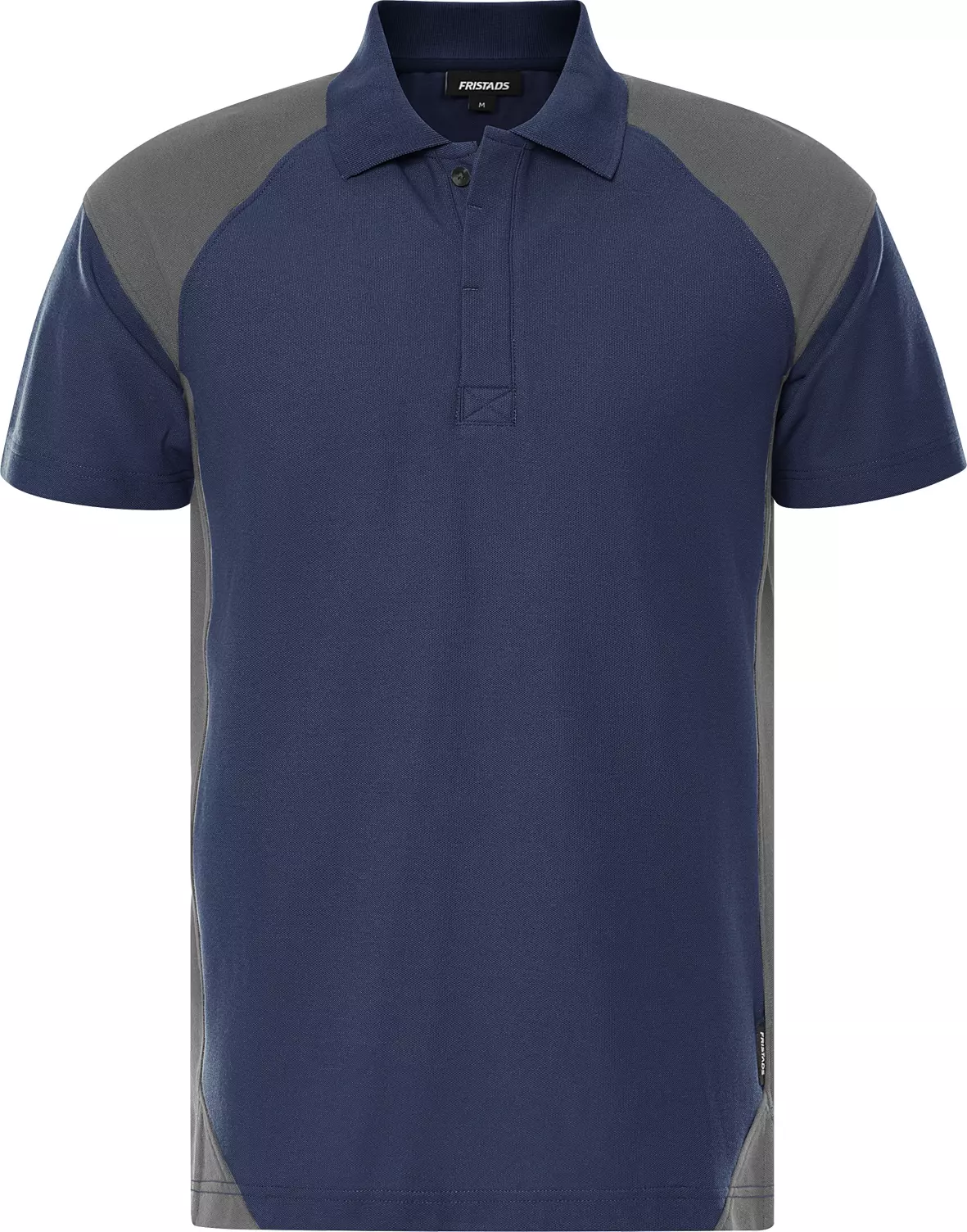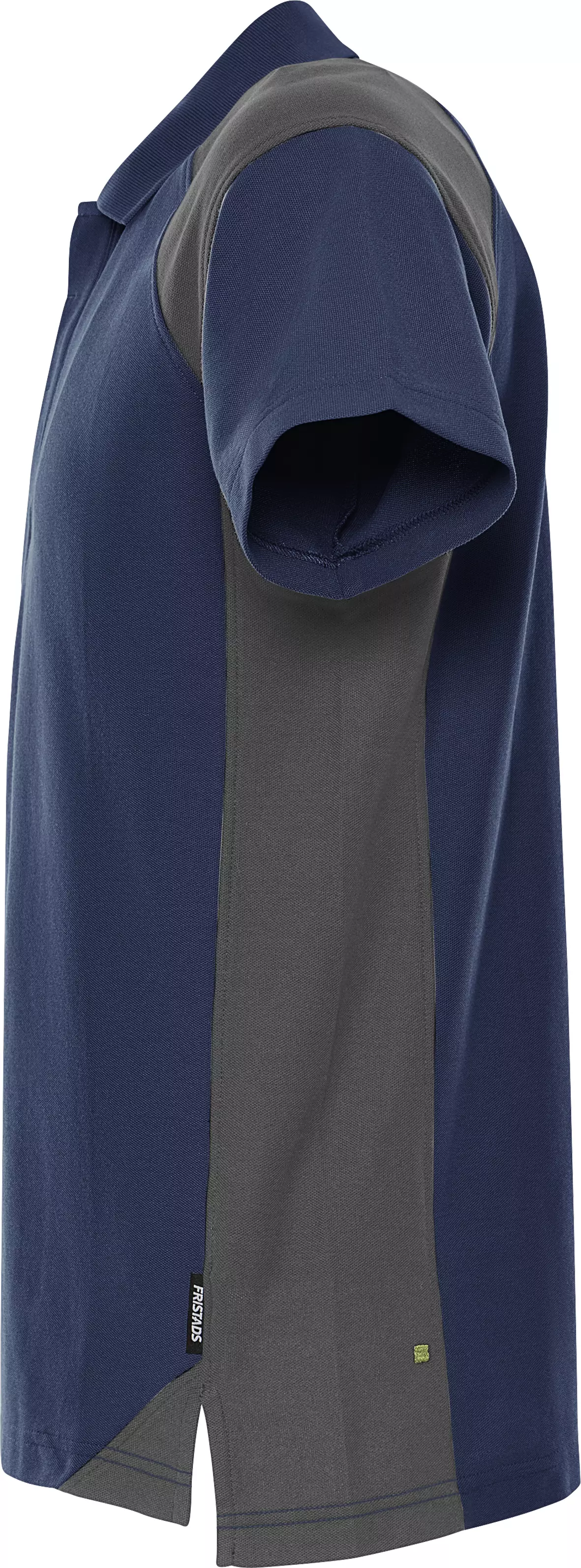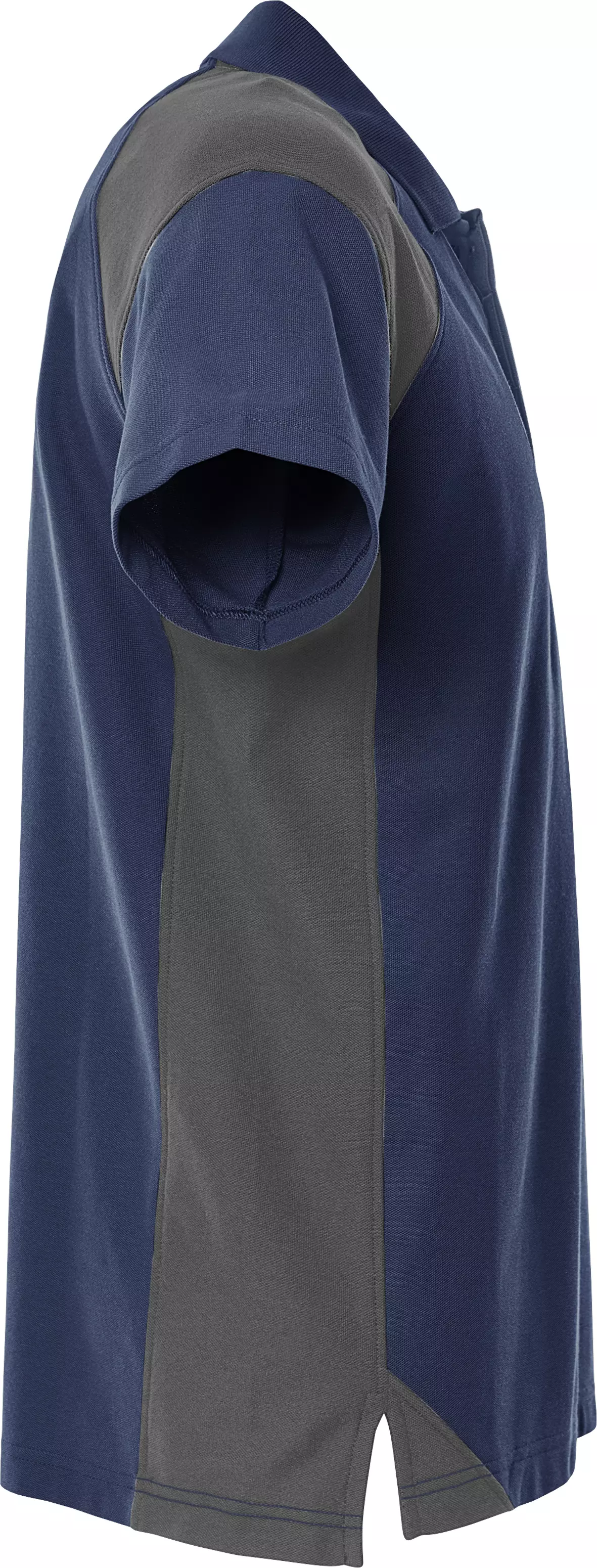


Product description
Heavy pique polo shirt made from partially recycled material and offering UPF 40 UV protection. The shirt combines durability and comfort with 240 g/m² fabric that feels like cotton against the skin. Industrial wash approved and ÖKO-TEX® certified product suitable for demanding work environments.
Product features:
- Partially recycled material
- Ribbed collar
- Front placket with concealed buttons
- Raglan sleeves
- Side vents
Technical specifications:
- Material composition: 65% recycled polyester, 35% cotton (HiVis yellow 80% recycled polyester, 20% cotton)
- Weight: 240 g/m²
- Cotton feel
- Industrial wash tested according to ISO 15797
Standards:
- EN 13758-2 UPF 40 UV protection
- ÖKO-TEX® certified
- ÖKO-TEX® Recycled PRO label
- EPD Skarup
About Polo
Polo shirts combine comfort with a professional appearance, featuring a collared neckline and button placket. Perfect for business casual settings, uniforms, or everyday wear, these versatile garments offer breathable comfort while maintaining a polished look throughout the day.
- High Visibility
- UV Protective
- Machine Washable
Standards and labels
Fristads delivery terms
Free delivery when you order more than 80,00 € from Fristads
Supplier shipping fee 7,94 €
Brand minimum 20,00 €
50,19 €
Choose size
Shipping fee is 7,94 € for orders under 80,00 €